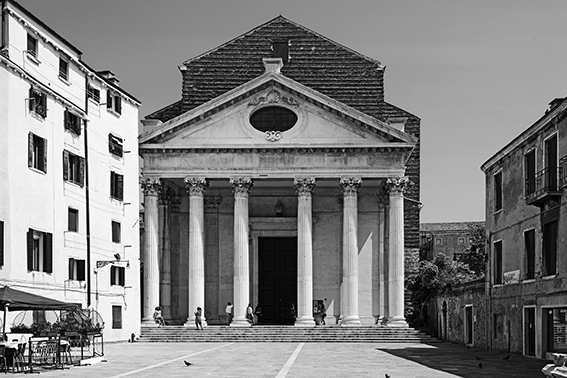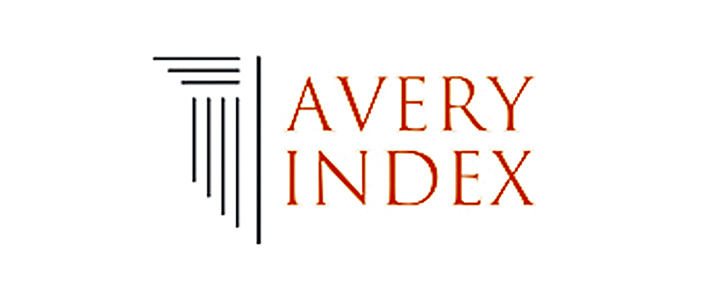Two Speeds: Time of Three Opera and Time of Users
DOI:
https://doi.org/10.17979/aarc.2019.6.0.6230Keywords:
opera, repetition, emotion, Alberto Gianfreda, tolentiniAbstract
The form of faith is a living form, starting from a Urform, according to an aesthetics manner. Art and architecture have the same virtual capacity of ritual to create the counterintuitive world. We have two ways of transmitting faith: repetition and emotion. Repetition is the form of the ritual and emotion is what all the three opera must have in common. Liturgy, Art and Architecture are understood as opus. There is a temporal relationship between vital becoming of this three opera and the user. Forms change over time and they should continue communicating on the basis of a positive relationship with users. In the Italian context there is a fracture between some users and the making of the form. The fracture needs to be reconciled through an appropriate education of principals and worshippers. The methodological process for Alberto Gianfreda’s liturgical adaptation of Tolentini’s church in Venice is brought to attention.
Downloads
Metrics
References
Bonaccorso, Giorgio. 2010. La liturgia e la fede: la teologia e l’antropologia del rito. Padova: Messaggero/Abbazia di Santa Giustina.
Bonaccorso, Giorgio. 2013. L’estetica del rito. Sentire Dio nell’arte. Cinisello Balsamo: San Paolo.
Bonaccorso, Giorgio. 2015. Rito. Padova: Messaggero.
Boselli, Goffredo, ed. 2006. L’ambone: tavola della parola di Dio. Atti del Convegno Liturgico Internazionale, Bose, 2-4 giugno 2005. Magnano: Qiqajon.
Boselli, Goffredo, ed. 2013. L’adeguamento liturgico: identità e trasformazione delle chiese. Atti del X Convegno Liturgico Internazionale, Bose, 31 maggio-2 giugno 2012. Magnano: Qiqajon.
Comiati, Gaetano, and Francesca Leto. 2011. «Normatività e creatività nel rito: una lettura antropologica per una ricomprensione pastorale». Rivista Liturgica 98/5: 877-892.
Conferenza Episcopale Italiana. 1996. L’adeguamento delle chiese secondo la riforma liturgica. Nota pastorale della Commissione Episcopale per la Liturgia. Accessed July 26, http://bit.ly/2DSZ8rz.
Dall’Asta, Andrea. 2013. «Quale committenza per l’arte sacra? Un dialogo tra arte e fede». Rivista Liturgica 1: 69-83.
Damasio, Antonio. 1996, Descartes’ Error. Emotion, Reason and the Human Brain. London: Papernac.
Debuyst, Frédéric. 2006. «L’ambone un luogo vivo per l’assemblea». In Boselli 2006, 17-27.
Dorfles, Gillo. 2011. «Momenti di una ricerca estetica». Itinerario estetico. Simbolo, mito, metafora, edited by Luca Cesari, 150-155. Bologna: Compositori.
Gerhards, Albert. 2013a. «Lo spazio plasma la liturgia: adattare la liturgia al luogo». In Boselli 2013, 137-155.
Gerhards, Albert. 2013b. «Sintesi conclusiva». In Boselli 2013, 260-267.
Gianfreda, Alberto. 2019. «L’altare e l’ambone, S. Nicola da Tolentino». Accessed July 26, http://bit.ly/381nux0.
Gibson, James J. 1979. The Ecological Approach to Visual Perception, Boston: Houghton Mifflin.
Kirk, Ulrich, and others, 2009. «Brain correlates of aesthetic expertise: A parametric fMRI study». Brain and Cognition 69: 306-315.
Kreinath, Jens, Jan Snoek and Michael Stauberg. 2008. Theorizing Rituals: Classical Topics, Theoretical Approaches, Analytical Concepts. Leiden/Boston: Brill.
Langer, Susanne. 1942. Philosophy in a new Key. Cambridge: Harvard University Press.
Langer, Susanne. 1953. Feeling and Form: a Theory of Art. New York: Charles Scribner’s Sons.
Lawson, Thomas. 2008. «Cognition». In Kreinath et al, 307-319.
Leto, Francesca. 2017a. «Norma e metafora: principi creativi dello spazio liturgico». In Longhi 2013, 135-144.
Leto, Francesca. 2017b. «Spazio sacro e ritualità: le metafore spaziali in relazione alla costruzione dell’edificio liturgico», PhD diss. Institute of Pastoral Liturgy, Abbazia di S. Giustina of Padova, Pontifical Atheneum of St. Anselm of Rome.
Longhi, Andrea, ed. 2017. Architettura e liturgia: autonomia e norma nel progetto. Bologna: Bononia University Press.
Lüddeckens, Dorothea. 2008. «Emotion». In Kreinath et al, 545-570.
Mallgrave, Harry F. 2013. Architecture and Embodiment: The Implications of the New Sciences and Humanities for Design. London/New York: Routledge.
Second Vatican Council. 200218. Presbyterorum ordinis. Decreto sul mistero e la vita sacerdotale. 1965. Enchiridion Vaticanum. Documenti del Concilio Vaticano II, 1243-1318. Bologna: Edizioni Dehoniane.
Pyysiäinen, Ilkka. 2003. How Religion Works: Towards a New Cognitive Science of Religion. Leiden/Boston: Brill.
Rappaport, Roy A. 1992. Ritual and religion in the making of humanity. Cambridge: Cambridge University Press.
Santi, Giancarlo. 2017. Celebrare con le immagini nelle chiese italiane: committenza, orientamenti, realizzazioni. Milano: Vita e Pensiero.
Sequeri, Pier Angelo. 1993. «Estetica e teologia. L’indicibile emozione del Sacro: R. Otto, A. Schönberg, M. Heidegger». Milan: Glossa.
Smith, Jonathan Z. 19922. To take place: Toward theory in ritual. Chicago/London: The University of Chicago Press.
Tagliaferri, Roberto. 2017. «L’adeguamento delle chiese: un’impresa ambigua e controversa». In Longhi 2013, 145-152.
Tambiah, Stanley. 1985. Culture, Thought, and Social Action: An Anthropological Perspective. Cambridge: Harvard University Press.
Terrin, Aldo N. 2014. «Il valore della liminalità nel contesto di una prospettiva rituale plurisemantica». In La liminalità del rito, edited by Giorgio Bonaccorso, 17-52. Padova: Messaggero/Abbazia di Santa Giustina.
Thomas, Günter. 2008. «Communication». In Kreinath et al, 322-343.
Turner, Victor W. 1967. The forest of symbols: aspects of Ndembu ritual. Ithaca: Cornell University Press.
Valenziano, Crispino. 2005. Architetti di chiese. Bologna: EDB.
Valenziano, Crispino. 2006. «L’ambone: aspetti storici». In Boselli 2006, 87-100.
Williams, Ron G. and James W. Boyd. 2008. «Aesthetics». In Kreinath et al, 285-305.
Zanchi, Giuliano. 2014. «Se il contemporaneo incontra il sacro: primi segnali di una nuova amicizia». L’Osservatore Romano, July 8.
Zanchi, Giuliano. 2018a. Rimessi in viaggio: Immagini di una chiesa che verrà. Milano: Vita e Pensiero.
Zanchi, Giuliano. 2018b. Luoghi della grazia: La liturgia e i suoi spazi. Cinisello Balsamo: Edizioni San Paolo.
Zanchi, Giuliano. 2019. «Il ritorno dell’altare: La nuova coscienza dello spazio liturgico». L’Osservatore Romano, July 17.
















